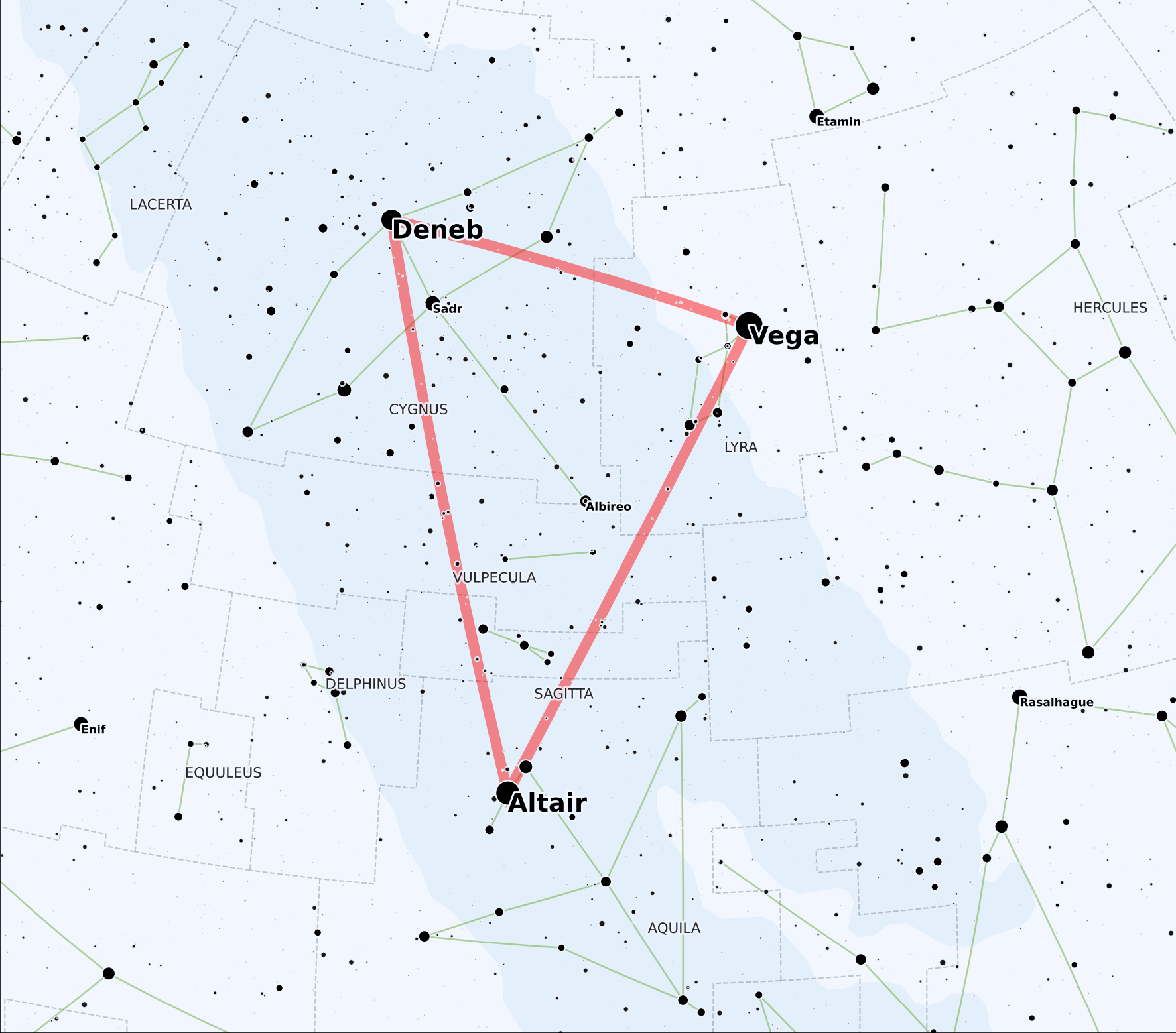Astronomy Explained
Deneb and the Summer Triangle: Gazing Into One of the Most Distant Stars Visible to the Naked Eye
Published on May 1, 2025 by Mr. Nishant Gor

The summer season has already begun. Clouds wander across the skies, and in some places, the monsoon showers have even arrived to give relief from the scorching heat. Amidst this seasonal shift, let us turn our eyes upward to the night sky and focus on a stellar jewel of summer — Deneb (The Tail of the Swan).
Around 9–10 PM on clear summer evenings, you can spot a magnificent celestial pattern called the Summer Triangle. Though not a constellation itself, this triangle is formed by three bright stars from three different constellations:
- Deneb in the constellation Cygnus (The Swan)
- Altair in Aquila (The Eagle)
- Vega in Lyra (The Lyre)
Together, they form a striking triangle that dominates the summer skies.
🌟 Deneb: A Star at an Immense Distance
Among these three, Deneb stands out not just in brilliance but in mystery. When you gaze at Deneb, you are looking across a vast cosmic gulf — an estimated 2,600 light-years away. This makes Deneb one of the most distant stars visible to the naked eye.
Yet, its exact distance is still uncertain. Astronomers have made several attempts to refine the measurement using advanced methods, but estimates continue to vary.
🔭 Why Is Deneb’s Distance So Hard to Measure?
For nearby stars, astronomers rely on the parallax method, measuring how a star shifts against the background sky as Earth orbits the Sun. But Deneb is too far away for parallax to be measured accurately from Earth’s surface.
To improve estimates, astronomers used different approaches:
- Theoretical stellar evolution models to predict its brightness and distance.
- Analysis of Deneb’s membership in the Cygnus OB7 association.
- Hipparcos Mission (ESA, 1990s): Europe’s space-based astrometry mission collected data on Deneb and initially suggested a distance of around 2,600 light-years.
- Later re-analyses of Hipparcos data produced differing results, with some studies suggesting Deneb could be half that distance.
🌌 Why Does Deneb’s Distance Matter?
The exact distance of Deneb is crucial because without it, astronomers cannot precisely determine the star’s:
- True size
- Mass
- Luminosity (energy output)
Deneb is believed to be a supergiant star, thousands of times brighter than the Sun. Yet without knowing its distance with certainty, its true scale remains partly a mystery.
🚀 Future of Deneb Studies: ESA’s GAIA Mission
The European Space Agency (ESA) launched Gaia, a successor to Hipparcos, designed to measure stellar positions and distances with unprecedented accuracy.
- In 2016, Gaia released its first dataset, but Deneb’s data was not included.
- In 2018 and later releases, astronomers expected more refined measurements of Deneb, bringing us closer to solving the puzzle.
Each year, with advances in astronomical software and computing power, we move a step closer to unlocking the secrets of this distant beacon.
🌠 Conclusion: The Endless Growth of Science
As we stand under the vast summer skies, the Summer Triangle reminds us of the beauty of celestial patterns, while Deneb humbles us with its sheer distance and mystery.
Science is an ever-evolving journey. Each new mission, each new dataset, helps refine our understanding. Someday soon, we will know with certainty just how far Deneb truly lies — and with it, we will better grasp the power of one of the universe’s brightest, most majestic stars.
Published by: Nishant Gor
Date: May 01, 2025
Affiliation: StarGazing India